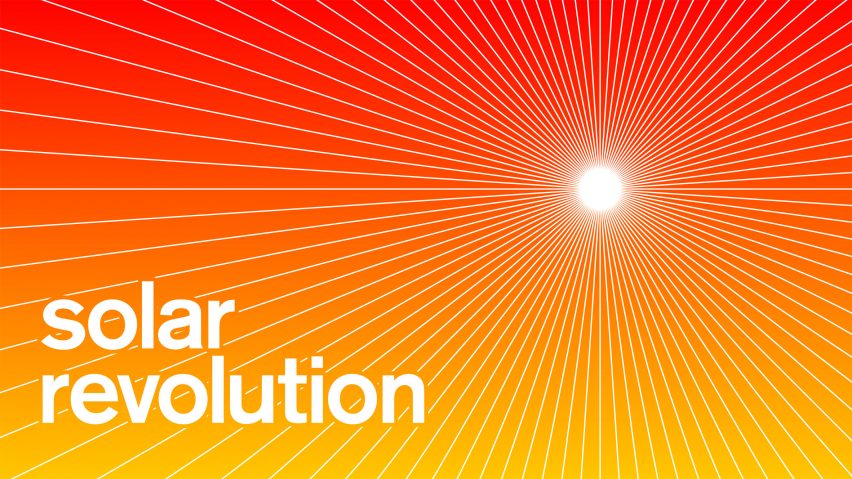Dezeen's latest series celebrates the extraordinary power of the sun. Starting today, Solar Revolution will explore how scientists and designers are seeking to harness the vast potential of this incredible resource, explains features editor Nat Barker.
The sun is truly phenomenal. A ball of gas and plasma 1.4 million kilometres wide and burning at 15 million degrees at its core, it sustains all life on Earth as we spin blessedly at the Goldilocks distance of 150 million kilometres away.
Humans have sought to harvest the power of our closest star for millenia. In ancient China, for instance, burning mirrors were used to start cooking fires 3,000 years ago.
As early as 1839, the young French physicist Edmond Becquerel observed the photovoltaic effect – that is, the production of electricity from light.
It was another 115 years before Bell Labs researchers in the United States produced the first practical silicon solar cell in 1954. At the time, The New York Times hailed "the beginning of a new era, leading eventually to the realization of one of mankind's most cherished dreams – the harnessing of the almost limitless energy of the sun for the uses of civilization".
Seven decades later – thanks in no small part to aggressive lobbying by the fossil fuel industry – that heady vision is still yet to be fully realised.
But now we are at a tipping point. The world is in the grip of a severe energy crisis that shows little sign of abating as oil, gas and coal supplies dwindle and global politics continue to writhe. Meanwhile, every day the news is filled with evidence that climate change has already reached a crisis point.
Solar has become the cheapest form of electricity
We desperately need to transition to renewable energy sources and solar, in combination with wind, is best-placed to take the lead. In 2020, the International Energy Agency declared that solar had become the cheapest form of electricity.
Photovoltaics have come a long way since Bell Labs' invention. Increasing efficiency and the advent of silicon alternatives like thin-film solar capturing materials and even organic-based cells have opened the sunroof to exciting new ways of deploying solar power, which scientists and designers are experimenting with and which this series will explore.
Generating electricity with panels is not the only way to utilise the sun's energy, and we will be exploring this too.
Of course, there are barriers to attaining our potential solar-fuelled future which we will delve into as well.
The Solar Revolution is about hearing from experts across the field to celebrate and explain all the dizzying potential of the sun and what it means for design, architecture and society as a whole.
It follows on from the Carbon Revolution series that we ran in 2021, which looked at how the much-maligned element could be removed from the atmosphere and put to use on Earth.
Solar Revolution is about hearing from experts across the field
At the risk of mawkishness he would have loathed, it would be remiss not to mention that this solar series was the idea of Dezeen's late founder, Marcus Fairs, who passed away suddenly at the end of June. Fairs was passionate about solar power and inspired by its potential, as demonstrated by this opinion piece he wrote in March, which tragically turned out to be his last.
Running during the Solar Revolution series will be The Solar Biennale, a major seven-week event beginning in Rotterdam this week where scientists and designers will come together to discuss a solar-powered future.
The biennale's organisers, the pioneering solar designers Marjan van Aubel and Pauline van Dongen, have written an opinion piece in which they declare that "now is the time to design a solar future".
Here comes the sun. Here comes the Solar Revolution.
Solar Revolution
This article is part of Dezeen's Solar Revolution series, which explores the varied and exciting possible uses of solar energy and how humans can fully harness the incredible power of the sun.

